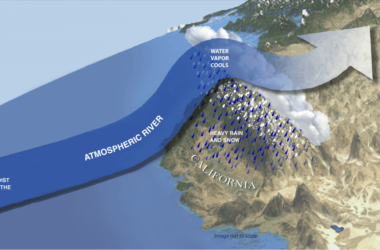With the global climate continuously evolving, adapting to these changes has become essential. The concept of climate resilience is crucial in this context. However, understanding and implementing this concept can be complex. Therefore, this guide aims to break down the essentials of building climate resilience, offering practical solutions for individuals, communities, and organizations alike.
Identifying Vulnerabilities
Firstly, it’s important to identify vulnerabilities. Essentially, this involves understanding the specific challenges posed by climate change in your context. Consequently, this step is crucial for individuals, communities, and organizations alike. By identifying these vulnerabilities, you can take the necessary steps to mitigate their impact.
Creating a Climate-Resilient Infrastructure
Subsequently, creating a climate-resilient infrastructure is imperative. This process includes investing in renewable energy sources, like solar and wind, which are more sustainable in the long run. Additionally, improving water management systems and constructing buildings with climate change in mind are also essential aspects of this process.
Building Community Awareness and Engagement
Additionally, building community awareness and engagement is key. In fact, this step is often overlooked but is crucial for successful resilience. By educating individuals about the realities of climate change, and how they can contribute to resilience efforts, communities can come together to create a unified front against the challenges posed by a changing climate.
Leveraging Technology for Climate Resilience
Moreover, leveraging technology is another vital aspect of building climate resilience. This involves using advanced technologies like AI and IoT to monitor and manage climate-related data. By doing so, you can make more informed decisions that contribute to resilience efforts.
Implementing Sustainable Practices
Furthermore, implementing sustainable practices is a must. This includes reducing carbon emissions, conserving water, and minimizing waste. By adopting these practices, individuals and organizations alike can contribute to the overall goal of building climate resilience.
Strengthening Policies and Regulations
Finally, strengthening policies and regulations is critical. Governments and organizations need to create and enforce policies that promote sustainability and resilience. This includes setting emissions targets, regulating waste management, and incentivizing renewable energy production.
Conclusion
In conclusion, building climate resilience is a multifaceted process that requires effort from individuals, communities, and organizations alike. By understanding and addressing vulnerabilities, creating resilient infrastructure, raising awareness, leveraging technology, adopting sustainable practices, and strengthening policies, we can all contribute to a more resilient future.
Similar Articles
- Carbon Credits: A Comprehensive Guide to Offset Emissions
- Carbon Insetting: A Comprehensive Guide
- Carbon-Neutral Journeys: Paving the Way Towards a Sustainable Future
Frequently Asked Questions about Climate Resilience
What is Climate Resilience?
Climate resilience refers to the ability of individuals, communities, and systems to anticipate, prepare for, respond to, and recover from the adverse impacts of climate change. This includes the capacity to mitigate damage, take advantage of opportunities, and cope with the consequences.
Why is Climate Resilience Important?
Climate resilience is important because it helps to protect communities and ecosystems from the adverse effects of climate change. By enhancing resilience, we can reduce the vulnerability of people and systems to extreme weather events and other climate-related disruptions.
How Can Individuals Build Climate Resilience?
Individuals can build climate resilience by adopting sustainable practices such as reducing energy consumption, conserving water, recycling, and using public transportation. Additionally, individuals can also prepare for extreme weather events by having an emergency plan in place.
How Can Communities Build Climate Resilience?
Communities can build climate resilience by investing in climate-resilient infrastructure, improving disaster preparedness and response, and promoting community engagement and awareness. This may involve creating community gardens, organizing neighborhood clean-ups, and developing local climate action plans.
What Role Do Governments Play in Building Climate Resilience?
Governments play a crucial role in building climate resilience by setting policies and regulations that promote sustainability and resilience. This may include setting emissions targets, regulating waste management, incentivizing renewable energy production, and providing funding for climate adaptation projects.
What is Climate-Resilient Infrastructure?
Climate-resilient infrastructure refers to the design and construction of buildings, roads, bridges, and other infrastructure that can withstand the impacts of climate change. This includes considering factors such as sea-level rise, extreme weather events, and changes in temperature and precipitation patterns.
How Can Technology Contribute to Climate Resilience?
Technology can contribute to climate resilience by providing tools for monitoring and managing climate-related data. This includes the use of advanced technologies such as artificial intelligence (AI) and the Internet of Things (IoT) to analyze climate trends, predict extreme weather events, and optimize resource management.
What are Some Examples of Sustainable Practices that Promote Climate Resilience?
Some examples of sustainable practices that promote climate resilience include using renewable energy sources, reducing waste, conserving water, and promoting biodiversity. These practices help to reduce carbon emissions and minimize the negative impacts of climate change.
How Can Individuals and Communities Prepare for Extreme Weather Events?
Individuals and communities can prepare for extreme weather events by having an emergency plan in place, creating disaster preparedness kits, and staying informed about weather forecasts and warnings. Additionally, communities can invest in early warning systems and improve infrastructure to withstand extreme weather events.
How Can Policies and Regulations Strengthen Climate Resilience?
Policies and regulations can strengthen climate resilience by creating incentives for sustainable practices, setting standards for climate-resilient infrastructure, and providing funding for climate adaptation projects. By enforcing these policies and regulations, governments can help to ensure that individuals, communities, and systems are better prepared for the impacts of climate change.










